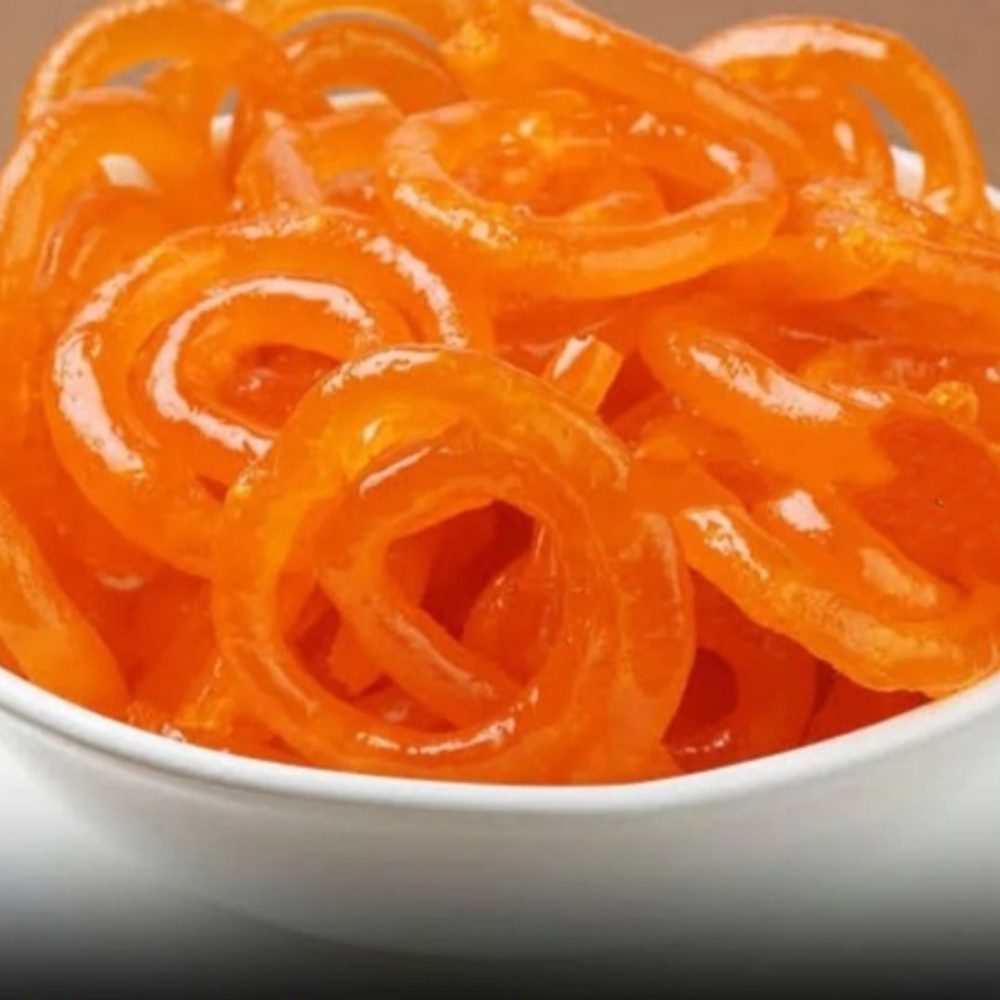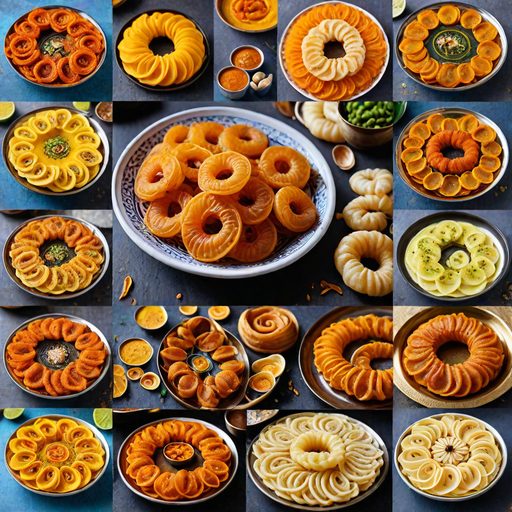
Jalebi: A Sweet Symphony of Flavours
Recommended for Jalebi
Unveiling the Sweet Saga of Jalebi

Unveiling the Sweet Saga of Jalebi
Namaskar, readers! Curious Times here, your trusty guide on a culinary adventure that’ll tickle your taste buds and warm your heart. Today, we’re diving headfirst into the world of jalebi – that glorious, golden, syrupy treat that’s not just a dessert, it’s a cultural icon, a celebration of India’s rich heritage, and, honestly, just downright delicious.
Ever had a jalebi? If not, you’re missing out, trust me. It’s like a party in your mouth – a symphony of textures with a crispy crunch that gives way to a burst of pure sweetness. Every bite is a little explosion of flavor, and it’s that explosion that we’re about to unravel.
Think of it as a culinary masterpiece crafted from a simple batter of flour and water. It's deep-fried to golden perfection, then dunked in a fragrant sugar syrup that's often infused with saffron, rosewater, or cardamom – talk about a flavor bomb!.
Funny enough, this iconic Indian sweet actually hails from ancient Persia, where it was called Zalabiya.
Oh, there are so many ways! You can enjoy it warm or cold, on its own as a sweet treat, or paired with rabdi (a creamy milk sauce), rabri (thickened milk), or even a dollop of tangy yogurt to cut through the sweetness. It's all about personal preference, really. What is jalebi, exactly?
Where does this golden goodness come from?
How do you even eat this thing?
The Persian Prelude: Zalabiya’s Sweet Genesis

The Persian Prelude: Zalabiya’s Sweet Genesis
Let’s hop in our time machine and journey back to the bustling bazaars of ancient Persia. Imagine the sights and sounds – merchants hawking their wares, the smell of spices wafting through the air, and in the midst of it all, skilled artisans crafting a delicate sweet known as Zalabiya.
This wasn’t just dessert, folks; it was a symbol of hospitality, a treat reserved for special gatherings and celebrations. The intricate spiral shape of Zalabiya was like a visual representation of good fortune, while its sweet taste brought joy to all who partook.
History is full of twists and turns, and the story of Zalabiya is no different. Along came the Turkish and Persian invaders in the 12th century, and with them, they brought this sweet delight to India.
It was like a culinary exchange program, with Zalabiya becoming a cultural ambassador of sorts. As traders and travelers shared their stories and goods, this sweet treat found its way into the hearts and kitchens of India.
Once in India, Zalabiya went through a bit of a makeover. It was renamed, first as Kundalika or Jalavallika, and then, finally, it got its iconic name – jalebi. But the change went deeper than just the name. Jalebi became woven into the very fabric of Indian culture, showing up at festivals, weddings, and family gatherings. It wasn’t just a sweet anymore; it was a symbol of joy, a celebration of life’s sweet moments.
Jalebi’s Indian Odyssey: A Kaleidoscope of Tastes
The Great Indian Jalebi Makeover

Jalebi’s Indian Odyssey: A Kaleidoscope of Tastes
Now, here’s where things get really interesting. Once jalebi landed in India, it wasn’t content to just stay the same. Oh no, it went on a culinary adventure of its own, adapting to the diverse tastes and traditions of this incredible country.
You see, India’s like a massive flavor playground, and jalebi got to play around with different ingredients and techniques. Up north, they like their jalebi thin and crispy, almost like delicate lacework. Down south, it’s a whole different ballgame – thick, syrupy, and practically melts in your mouth. It’s the same sweet treat, but with a whole new personality depending on where you are.
And then there are the flavors! Some regions infuse their jalebi with saffron, giving it a gorgeous golden hue and a subtle floral aroma. Others go for rosewater or cardamom, adding layers of complexity to the sweetness. It’s like jalebi’s saying, “Hey, I can be anything you want me to be!”
A Festive Favorite: Jalebi’s Ubiquitous Presence
Let us tell you, jalebi isn’t just a dessert in India; it’s a social butterfly. It shows up at every party, every festival, every celebration you can imagine. You walk down the street during Diwali, and the air is thick with the smell of ghee and sugar as jalebi vendors fry up batch after batch of this golden goodness.
It’s a sweet that brings people together. Rich or poor, young or old, everyone loves jalebi. It’s a reminder that no matter our differences, we can all come together to share a sweet moment.
But jalebi’s charm isn’t limited to India. This sweet sensation has crossed borders and oceans, finding fans all over the world. Back in its homeland of Persia, it’s still a beloved treat, often served during special occasions.
And get this – it’s even made its way to places like Algeria and Tunisia, where they’ve put their own spin on it. Some add nuts or dried fruits, others experiment with different spices. It just goes to show that jalebi’s got that universal appeal that transcends cultures and cuisines.
From Batter to Bliss: The Art of Jalebi Making
Now, you might be thinking, “Okay, Jon, this all sounds amazing, but how do they actually make this magical jalebi?” Well, my friends, let me break it down for you.
At its heart, jalebi is a pretty simple creation. We’re talking flour, water, and sugar – the building blocks of so many delicious things. But what transforms these humble ingredients into a culinary masterpiece is a bit of kitchen wizardry.
First, you’ve got the fermentation process, which adds a subtle tanginess to the batter. Then comes the deep-frying, where the batter puffs up and turns that glorious golden brown. And finally, the pièce de résistance – the soaking in sugar syrup. This is where the flavors meld, the textures come together, and the jalebi truly comes alive.
The Dance of the Batter: Mastering the Spiral
But the real magic happens when the batter hits the hot oil. Skilled jalebi makers pour the batter in a continuous stream, creating those intricate spirals that are as much a feast for the eyes as they are for the taste buds.
It’s like watching a dance – a graceful, flowing movement that takes years of practice to perfect. And the result is not just a pretty shape, it’s a crucial part of the jalebi’s texture and flavor. Those spirals ensure even cooking and allow the syrup to penetrate every nook and cranny, creating that perfect balance of crispiness and sweetness.
The Sweet Embrace: Soaking in Syrup
Now, here’s where the jalebi gets its final touch – the sugar syrup bath. It’s like a spa day for the jalebi, where it soaks up all that fragrant sweetness and transforms into a truly decadent treat.
The crisp exterior softens, the flavors meld, and the jalebi becomes a symphony of textures and tastes. It’s sweet, it’s crunchy, it’s syrupy – it’s everything you could ever want in a dessert.
A Sweet Legacy That Endures
So, there you have it, readers – the story of jalebi, a sweet that’s traveled through time and across continents, captivating taste buds and bringing joy to millions.
The next time you bite into a jalebi, take a moment to appreciate the history, the artistry, and the cultural significance behind this humble dessert. And if you’re feeling adventurous, why not try making it yourself? It’s a fun project, and the end result is pure bliss.
Remember, food is meant to be shared and enjoyed. So gather your loved ones, indulge in the sweetness of jalebi, and create memories that will last a lifetime.
Shubh Bhojan! (Happy Eating!)
Watch a video
Whip Up Crunchy, Juicy Jalebis in Minutes! Master the Ultimate Crispy Treat Recipe Now!
Curious Times is a leading newspaper and website for kids. We publish daily global news aligned to your learning levels (also as per NEP 2020): Foundational, Preparatory (Primary), Middle and Senior. So, check out the News tab for this. We bring kids’ favourite Curious Times Weekly newspaper every weekend with top news, feature stories and kids’ contributions. Check out daily JokesPoke, Tongue Twisters, Word of the Day and Quote of the Day, kids need it all the time.
ME – My Expressions at Curious Times is your place to get your work published, building your quality digital footprint. And it is a good way to share your talent and skills with your friends, family, school, teachers and the world. Thus, as you will step into higher educational institutes your published content will showcase your strength.
Events, Quizzes and Competitions bring students from over 5,000 schools globally to participate in the 21st-Century themes. Here schools and students win certificates, prizes and recognition through these global events.
Sign-up for your school for FREE!
Communicate with us: WhatsApp, Instagram, Facebook, Youtube, Twitter, and LinkedIn
0 (Please login to give a Curious Clap to your friend.)
